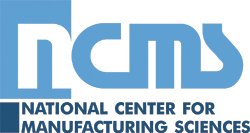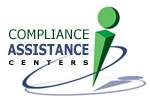Historical Articles
June, 1954 issue of Plating
QUESTION BOX
The following series of questions and answers, submitted by Eugene Roth, Secretary-Treasurer of the St. Joseph Valley Branch, were taken from a panel discussion at a recent meeting of that branch. The answers to the questions were provided by a panel of experts composed as follows: Joe Haviland, Frank Savage, Harold Weisner, and Duke Wysong as moderator.
Q. What is the comparison of adhesion between copper strike or nickel strike on steel?
A. (By Panel) On clean steel, copper is not necessary; on impure steel, copper strike will help.
Q. What are the advantages of high-chloride nickel strike?
A. (By Panel) It may give somewhat better coverage in low-current density areas, such as recesses; otherwise, there is no outstanding advantage, and it does make the plating problem more complex.
Q. What troubles are likely to occur in chromium plating 430 stainless steel?
A. (By Panel) There is no unusual plating problem. The main difficulty may be that the stainless steel may not be of uniform composition which will require polishing and buffing before plating. Chromium will be only as good as the quality of the finish over which you plate.
Q. We nickel plated very close mesh monel metal screens and found nickel peeling when the screen was rolled under pressure. What precautions can we take?
A. (By Panel) The cause of the trouble most likely is internal stress in the nickel deposit. The remedy may be heating after plating either in an oven or by a long soak in hot water.
Q. Does the panel know what the ”Morley Process” of hard chromium plating is?
A. (By Panel) No one present has heard of this process name.
Q. Has the panel heard of a process specification for nonreflective chromium plating for Army-Navy jobs?
A. (By Panel) No written specifications are known off-hand, but cold plating or a different type chromium bath may give the dull results that are desired.
Q. Does a coating of 0.0002 inch copper plus 0.0005 inch nickel give a completely rust resistant coverage on steel washing machine parts?
A. (By Panel) Depends a great deal on the steel. Ordinarily, the plating thickness for this purpose would be a minimum of 0.001 inch. Also, copper is being considered less and less for corrosion resistance while a nickel deposit, without copper, direct on good grade steel will give as good or better corrosion resistance.
Q. We have a ”fish-scale” pitting on 0.040 inch thick hard chromium plated shafts in the high-current density area. What causes this?
A. (By Panel) Most likely low sulfate.
Q. We used a portable barrel to cadmium plate steel screws and instead of their being plated with cadmium we found a severe etching of screws to a degree where it reduced the screw dimensions. Polarity was right and the following barrel plated work was fine.
A. (By Panel) Silence. (Brother you have something there.)
Q. We have a blackening job to do on cadmium plated parts, and we are using a proprietary dip but can’t get uniform black.
A. (By Panel) A muriatic acid dip before blackening may help. Heating the black dip above operating temperature and then cooling it may help restore the blackening dip quality; preheating the work to operating temperature of the bath may make color more uniform.
Q. We have zinc die castings which show streaks after a copper strike; streaks do not show up when plated in regular copper plating tank.
A (By Panel) If it looks like glove marks, a change of polishing compound may help—or use lime on polisher’s gloves, or alcohol to wipe pieces; or, if it is plating trouble, correct the copper strike solution. Actually, not enough facts are known to make any definite recommendations.
Q. How is hard-chromium plating done on aluminum?
A. (By Panel) Two ways—for light-work requirements of parts, use sand blast on aluminum, then plate this will give fair chromium adhesion. For severe requirements, use zincate process recommended by Aluminum Co. of America with single, double, or even triple zincate cycles to get best adhesion.
 |
 |
 |
 |
 |
| Home | Subscribe | Regulations | Compliance Assistance | News | Resources | Resource Locators | Directories | Online Training | About | Search | NASF.org |
The information contained in this site is provided for your review and convenience. It
is not intended to provide legal advice with respect to any federal, state, or local regulation.
You should consult with legal counsel and appropriate authorities before interpreting any
regulations or undertaking any specific course of action.
Please note that many of the regulatory discussions on STERC refer to federal
regulations. In many cases, states or local governments have promulgated relevant rules and
standards
that are different and/or more stringent than the federal regulations. Therefore, to assure full
compliance, you should investigate and comply with all applicable federal, state and local
regulations.

